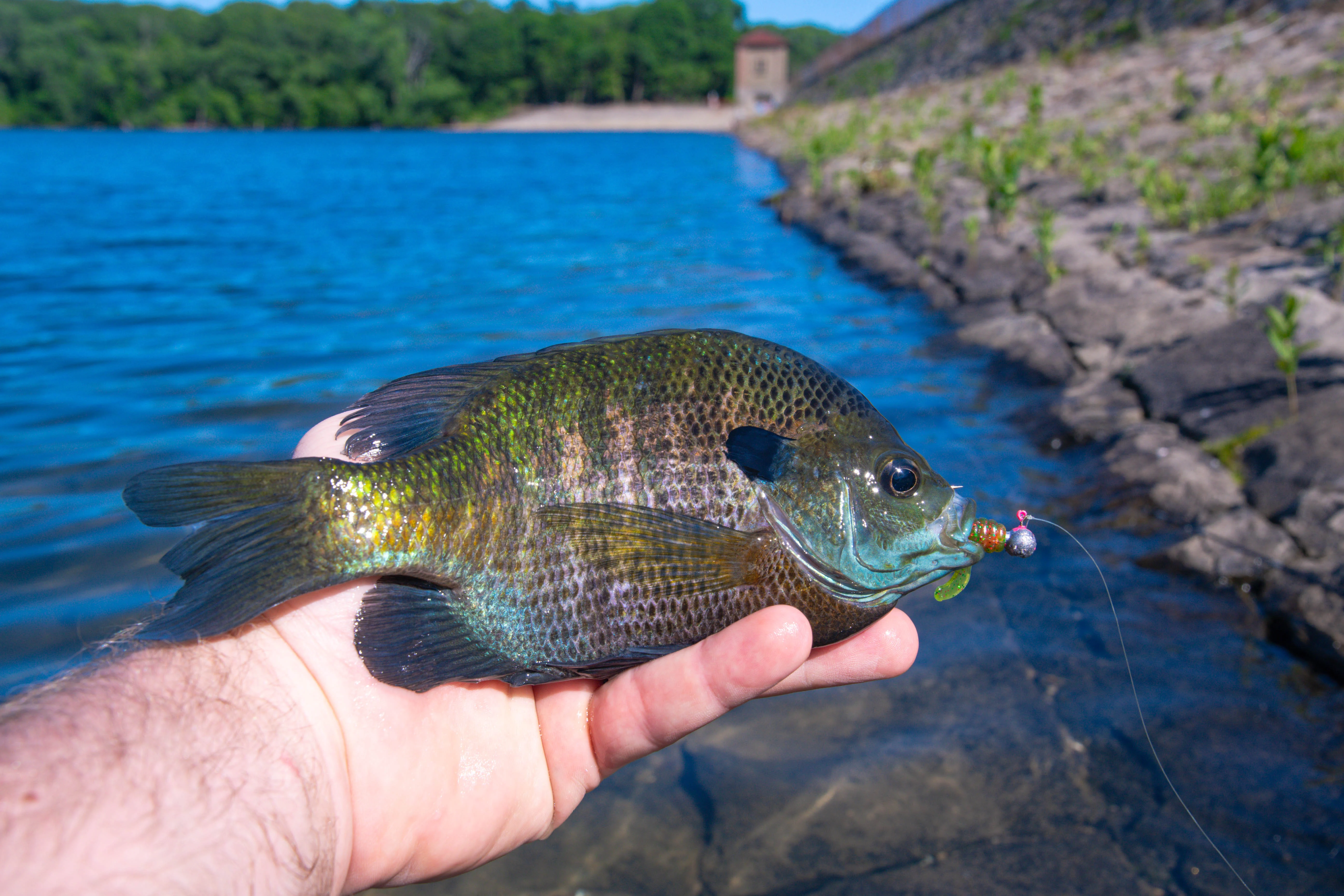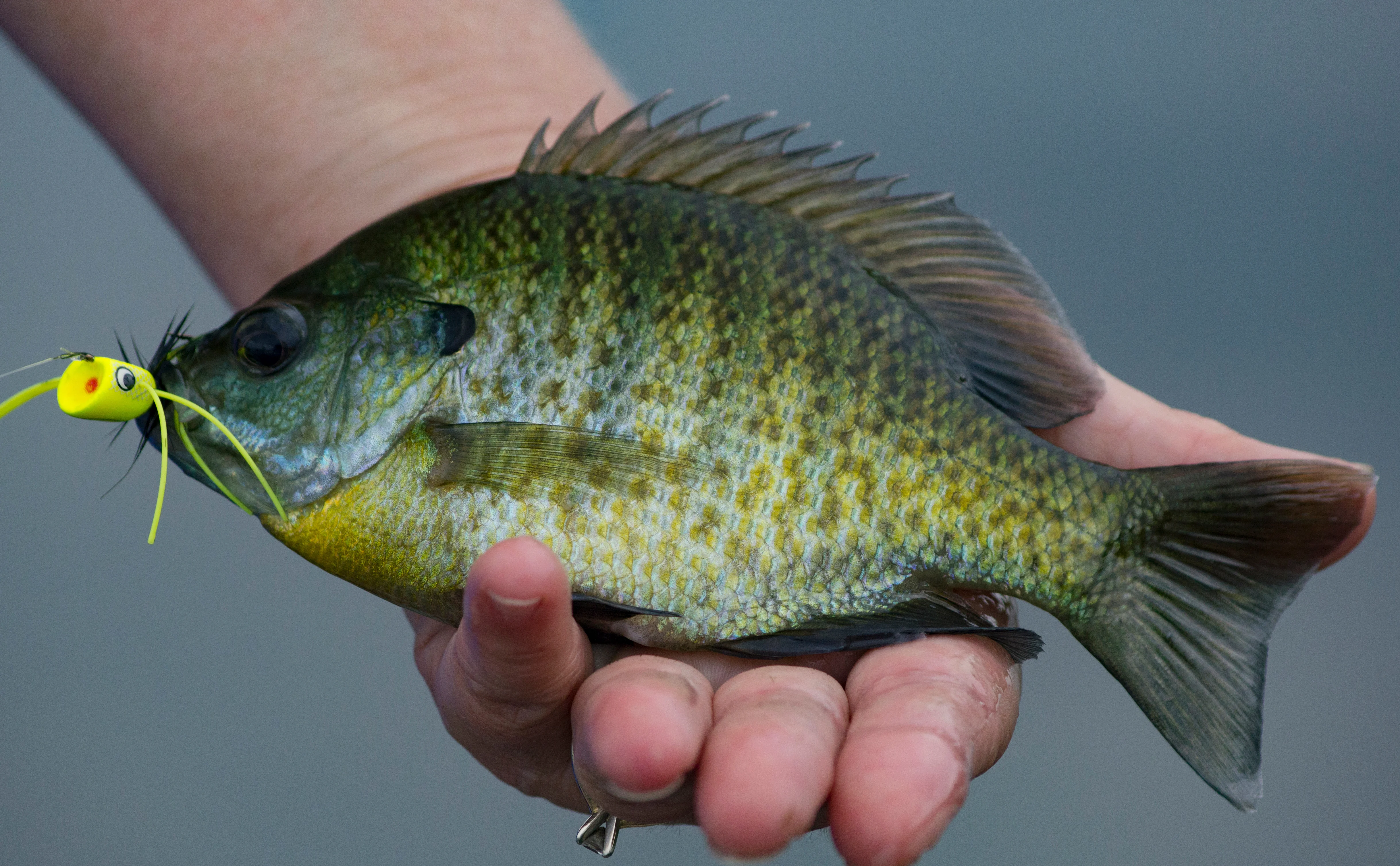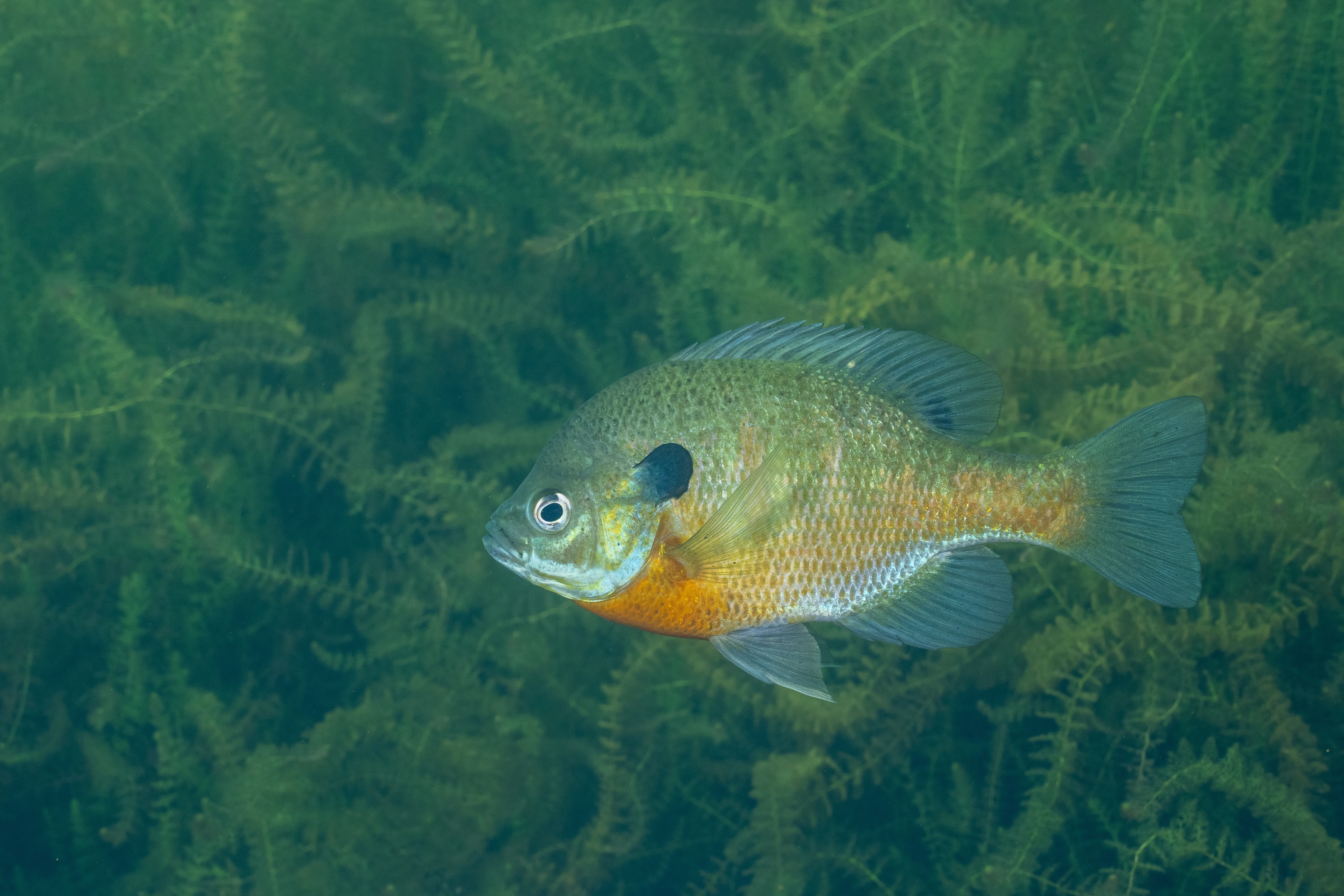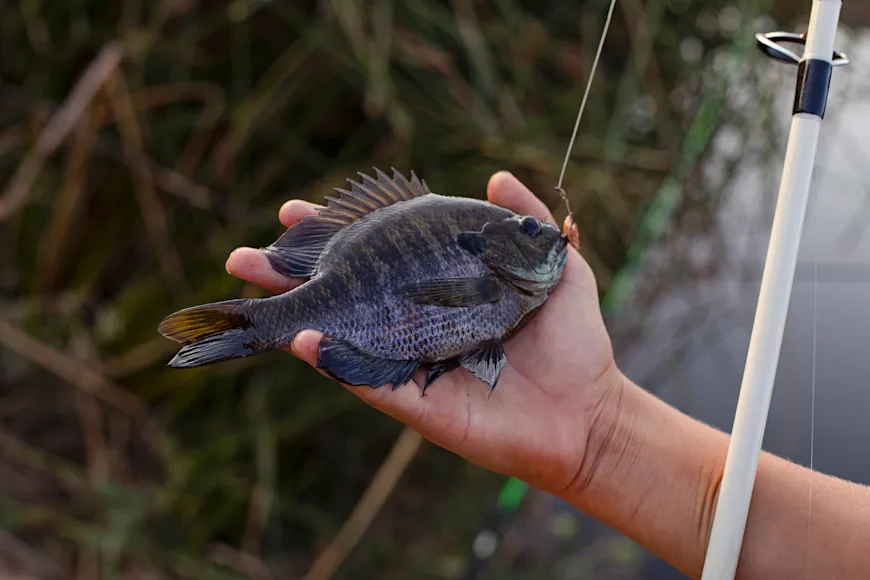In terms of availability, access, and a willingness to bite, it's hard to beat a bluegill. The species Lepomis macrochirus is widespread across the entire continent and is a popular game fish among freshwater anglers. Bluegill fishing is often action-packed, making it an ideal pursuit for youngsters just starting out with a rod and reel. Plus, they taste great on the table.
According to the U.S. Fish and Wildlife Service, the bluegill’s range extends from Canada to Mexico. These fish are native to much of the eastern and central states, while stockings have spread bluegill throughout the continental U.S., as well as Hawaii and Puerto Rico.
Healthy fisheries usually find loads of 2- to 4-inch juveniles running the shallows, while 6- to 7-inchers offer plenty of sport. Diligence and patience can turn up a monster ‘gill of 10 to 12 inches. Even though these bigger fish are old and wise, bluegill are bluegill, which means they like to eat. Here is everything else you need to know in order to locate, catch, and cook bluegill.

How to Locate Bluegill
Bluegills can be found anywhere, from huge lakes and small ponds to drainage canals and reservoirs. Any body of water body that maintains a couple feet of livable depth year-round is a good bet for bluegill. They are not picky fish, but a few points will lead you to the most promising areas.
Minnesota fishing guide Brian “Bro” Brosdah notes that the two key components for a thriving bluegill population are weed lines and some type of mud bottom. The latter, he said, is the bug-hatching factory that provides much of the bluegill’s day-to-day forage. It doesn't matter if that mud is widespread or relatively focused near creeks, canals, or bayou outflows. Mud equals meals, and these areas will hold healthy populations of bluegills.
Weed lines bring multiple benefits, not the least of which is shelter from pike, bass, gar, and other predators. Also, aquatic plants pump out lots of oxygen, so weed lines provide comfortable digs with shade and temperature moderation. Most importantly, weed lines host entire ecosystems with lots of insects, minnows, grass shrimp, and juvenile crawfish that bluegill love to gorge on.
“Lakes that have the most food have lots of weeds and mud bottom,” says Brosdahl. “Look for the deepest emergent weeds to hold the biggest bluegill. Also, a diverse habitat—different types of weeds growing together—always holds the best fish. Add in a log or some other type of secondary cover, and you may not have to move all day.”
Points, gaps, and any other irregularities always merit attention, but Brosdahl stresses edges—either the weed line perimeter where bluegill can capitalize on wind/current-driven food deliveries with quick access to safe cover, or the edges of interior holes and mini lagoons, which offer a similar benefit. Other habitat options include docks, bridges, laydown trees, and riprap banks. Don’t be surprised to find bluegill feeding in open water either, especially following an insect hatch. They’re seldom far from cover, so stay close to weed lines, and you won’t go wrong.
advertisement
Bluegill Fishing: Tips & Tactics
Indiscriminate feeders, bluegill readily eat live crickets and various earthworms. The local tackle shop is a good starting point for bait, but if time permits, involving young anglers in digging up earthworms or catching crickets and small grasshoppers deepens the angling experience. Putting an entire earthworm on your hook often proves counterproductive unless you find the giants that can suck in a whole worm. Too much bait dangling past the hook point allows sneaky bluegill to steal bait without getting hooked. Rather, make the fish commit by pinching your worm into smaller pieces, threading it onto the hook, and leaving just enough to wiggle.
For beginners who may be slow on the bite response, Brosdahl suggests No. 6-8 Gamakatsu circle hooks to prevent deep hooking. For most, a long-shank Aberdeen-style panfish hook with a depth-appropriate split shot weight, and an adjustable bobber does the job.
Manmade Bait
For impromptu bluegill missions, bread balls made from any soft, moldable baked item are an easy sell. Grab a slice of plain white bread, and you’ll have plenty of bait for a couple hours. The crusty edges make excellent panfish chum. Toss bits of freebies and watch for the surface feeds, or drop wadded bread balls into the water, see how long they descend before suddenly disappearing, and note the depth range for a proper bobber setting.
Berkley PowerBait Panfish Nibbles offer a pliable synthetic bait infused with scents formulated to stimulate feeding. Pop a jar in your pocket or tackle bag, and you’re ready to fish.
Artificial Baits
During ice season, Brosdahl is fond of dropping Northland tungsten jigs, as the density allows him to quickly present an insect or a plastic minnow in a form smaller than lead jigs of equal weight. After ice-out, he employs the same baits for open water ‘gills. To help bluegill find your baits amid dense cover, Brosdahl offers this rigging tip: “Add a spinner blade and one bead above the hook for just a little bit of attraction. You’re not trolling it, but when you drop it into an opening in the weeds, the blade turns." That vibration in the water will draw them out of the weeds and to your lure.
For open water bluegill, fish tiny hard baits like the Strike King Bitsy Pond Minnow, Rebel Teeny Wee Crawfish, or a Rapala Countdown CD01 or CD03 by weed edges or past a dock. Handy with a fly rod? Bluegill readily grab flies like poppers, foam spiders, and tiny versions of the Clouser minnow. A 3- or 4-weight rod keeps it fun, but if bass bycatch is likely, bump up to a heavier outfit.

advertisement
Gear for Bluegill Fishing
Bluegill fishing can be accomplished with simple cane poles or light spincast outfits. However, for more serious pursuits in places where you may need to negotiate a big fish’s extraction, light to medium-light spinning outfits offer a broader diversity. For maximum fun with sufficient power for lifting panfish out of cover, Brosdahl uses a 7- to 8-foot St. Croix Avid Series Panfish spinning rod. He’ll spool a matching reel with 10-pound Sunline SX1 braid with a 6-pound fluorocarbon leader for the right mix of strength and stealth.
“In hard stems or reeds, I’ll go with 6- to 8-pound Sunline supernatural monofilament,” Brosdahl says. “Unlike braid, the mono won’t cut into the vegetation and get stuck." Having more than one bluegill setup spooled with different line for different situations can prove very handy.

How to Cook Bluegills
Brosdahl suggests releasing larger bluegills while targeting mid-sized adults for the table and keeping only what you can eat in a meal or two. His favorite preparation is pan-fried filets in panko bread crumbs, adding a slice of sharp cheddar cheese and serving on a fresh biscuit with a jalapeño tartar sauce.

